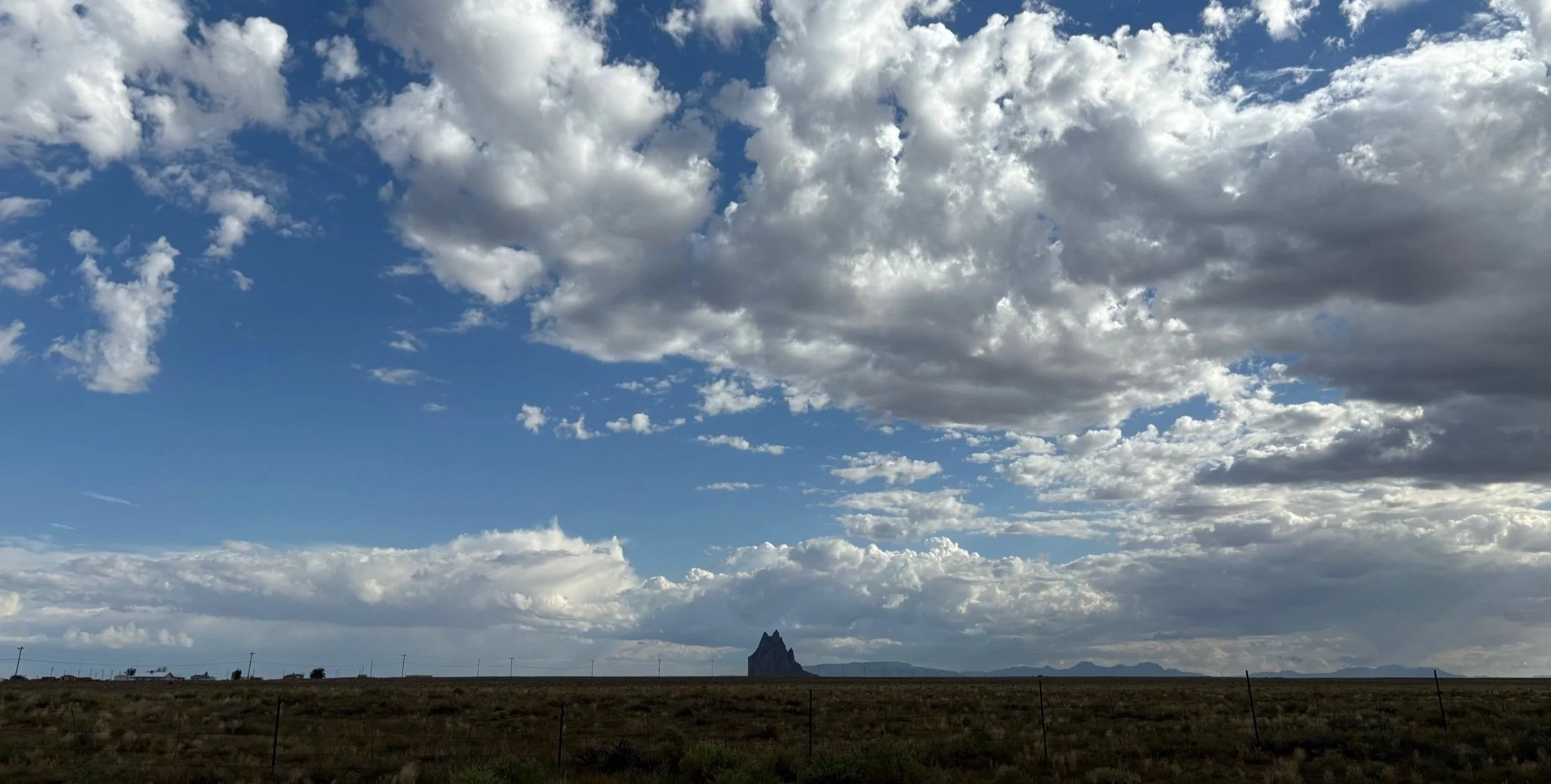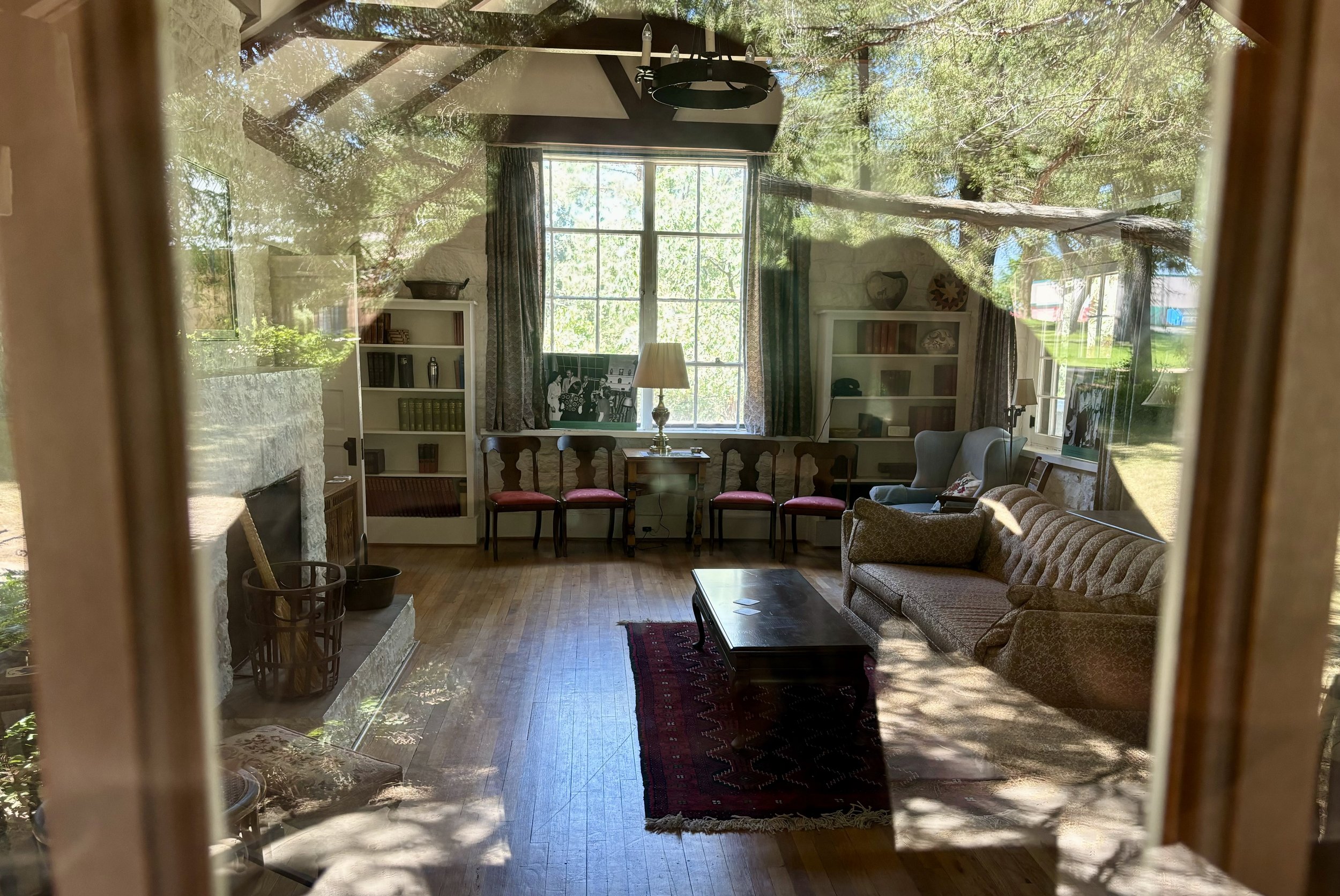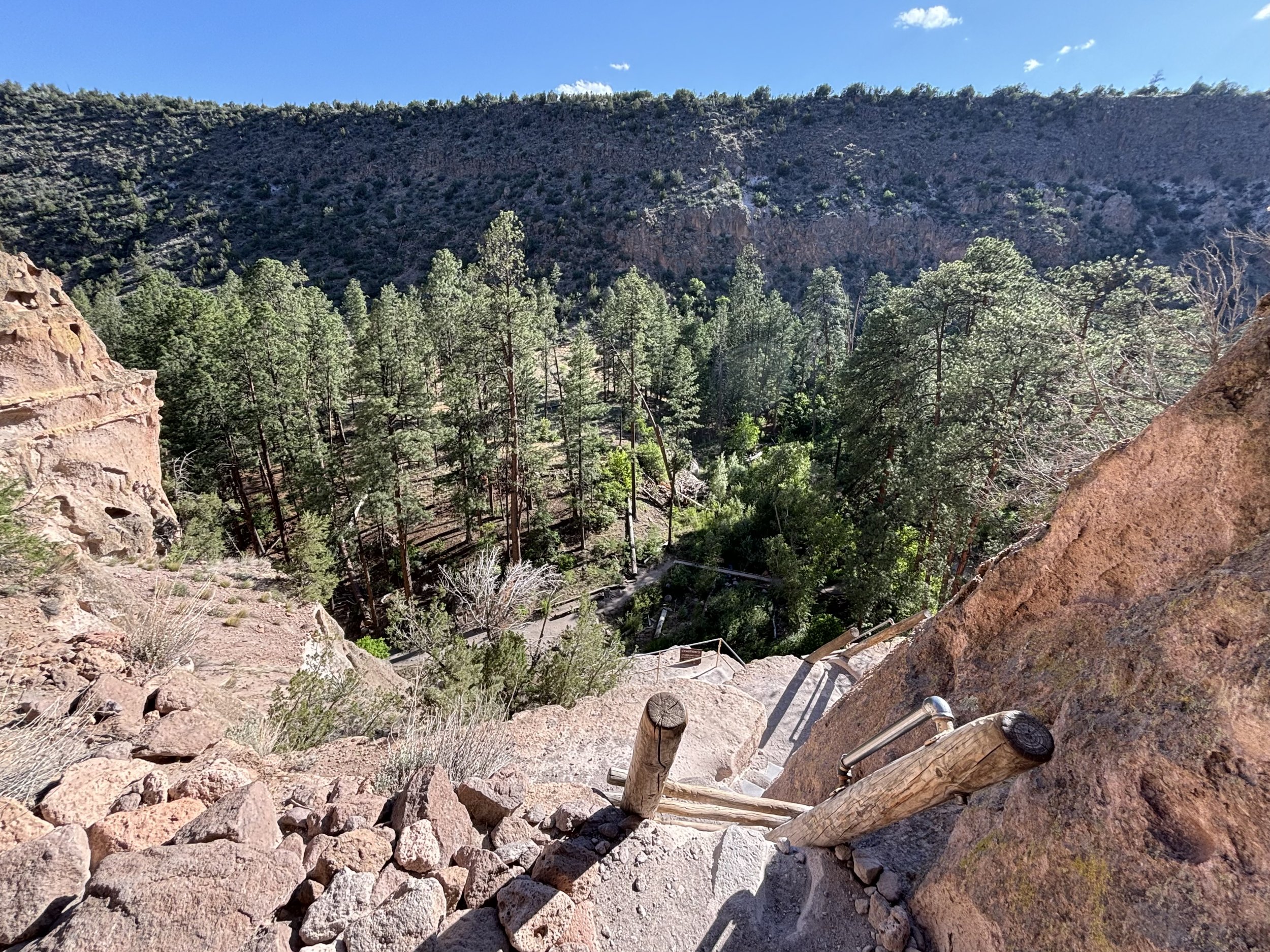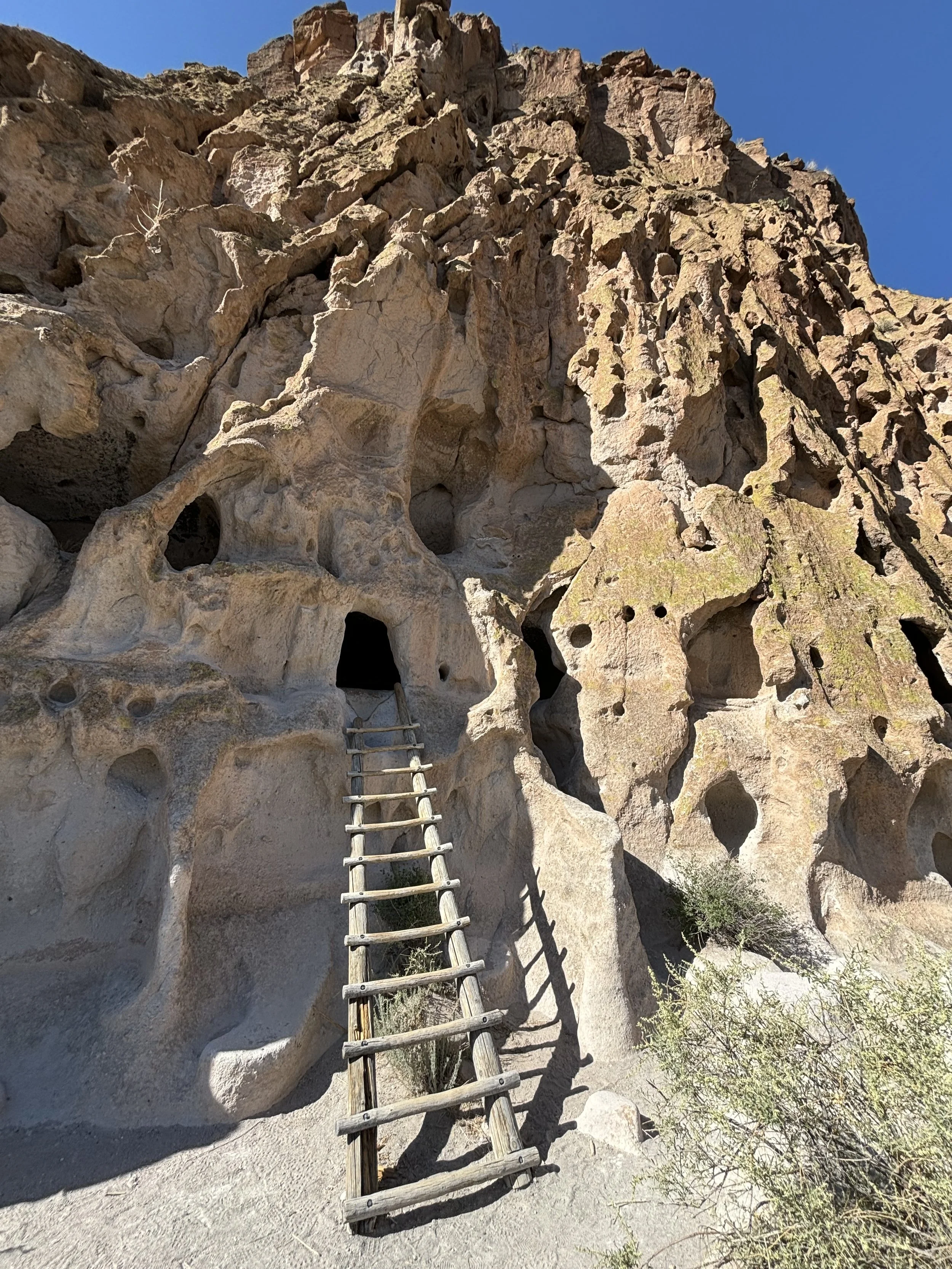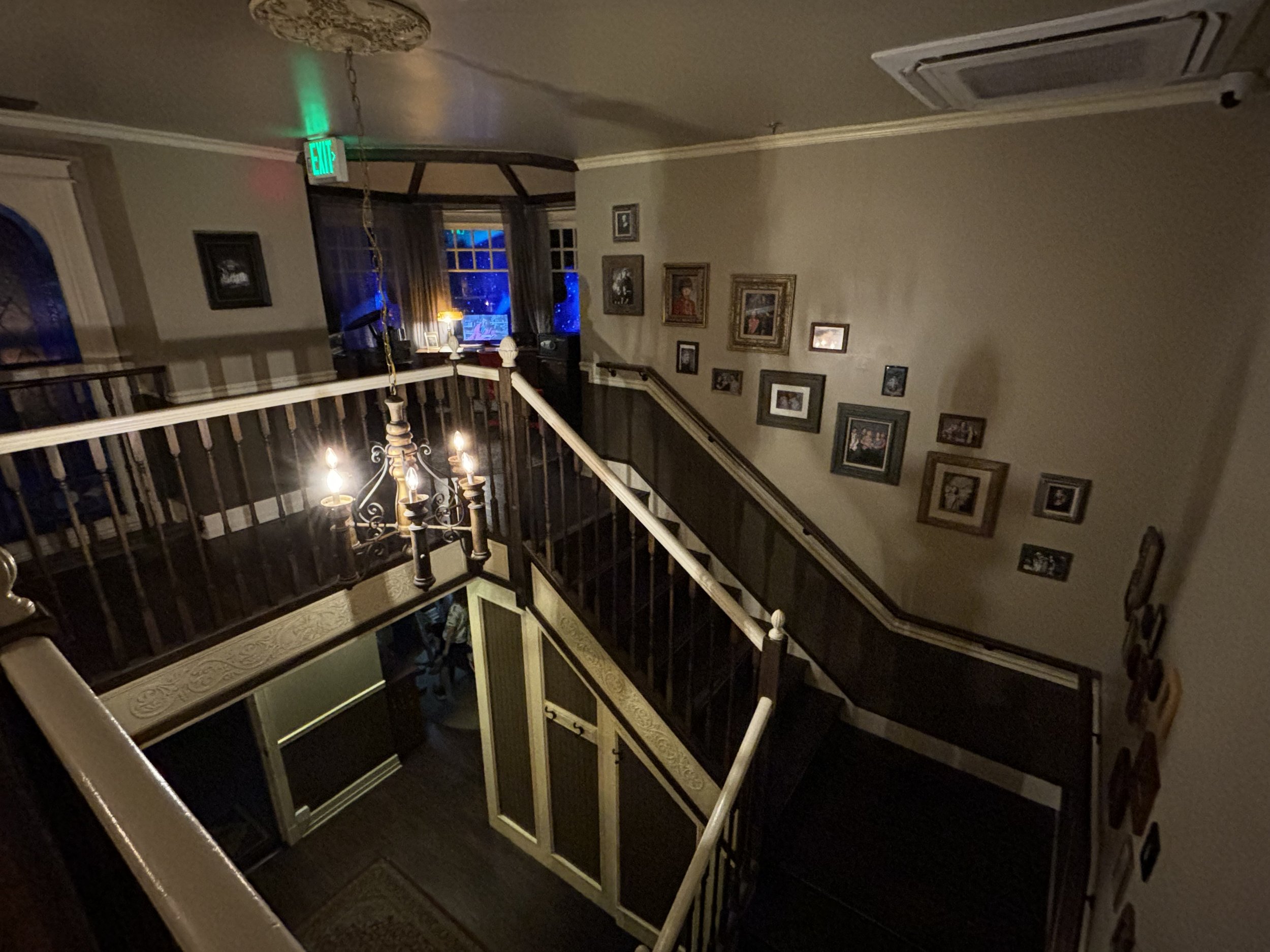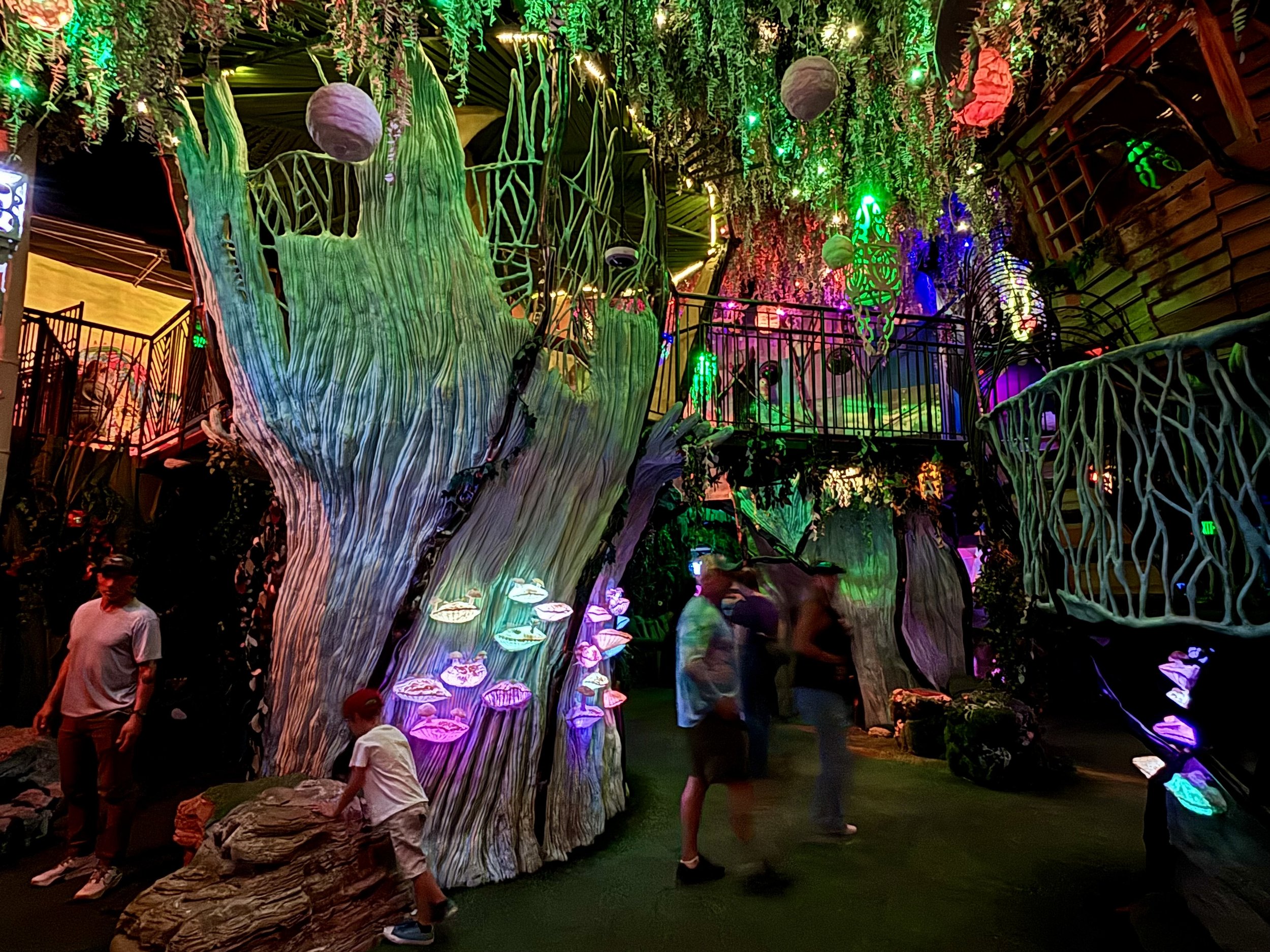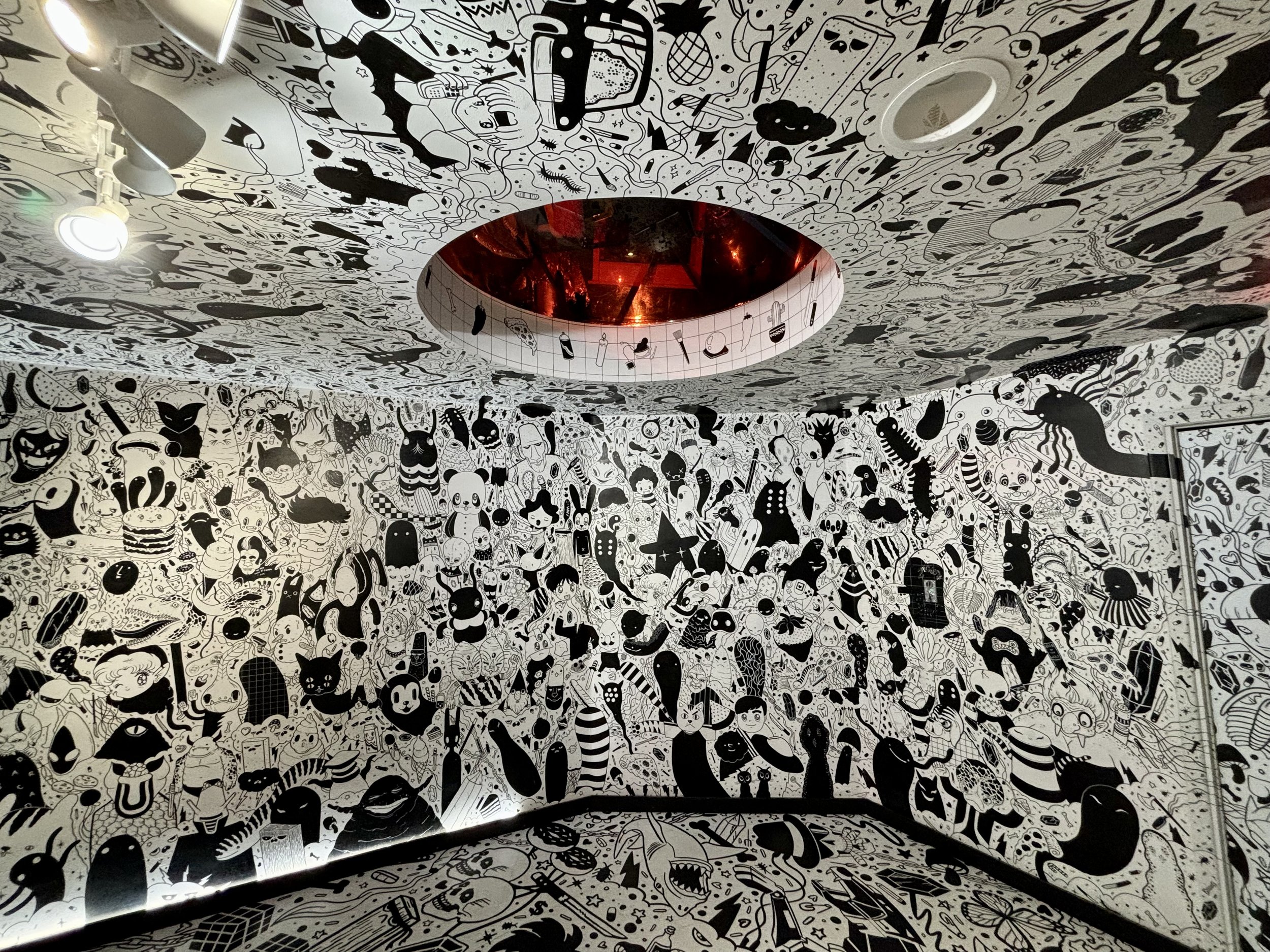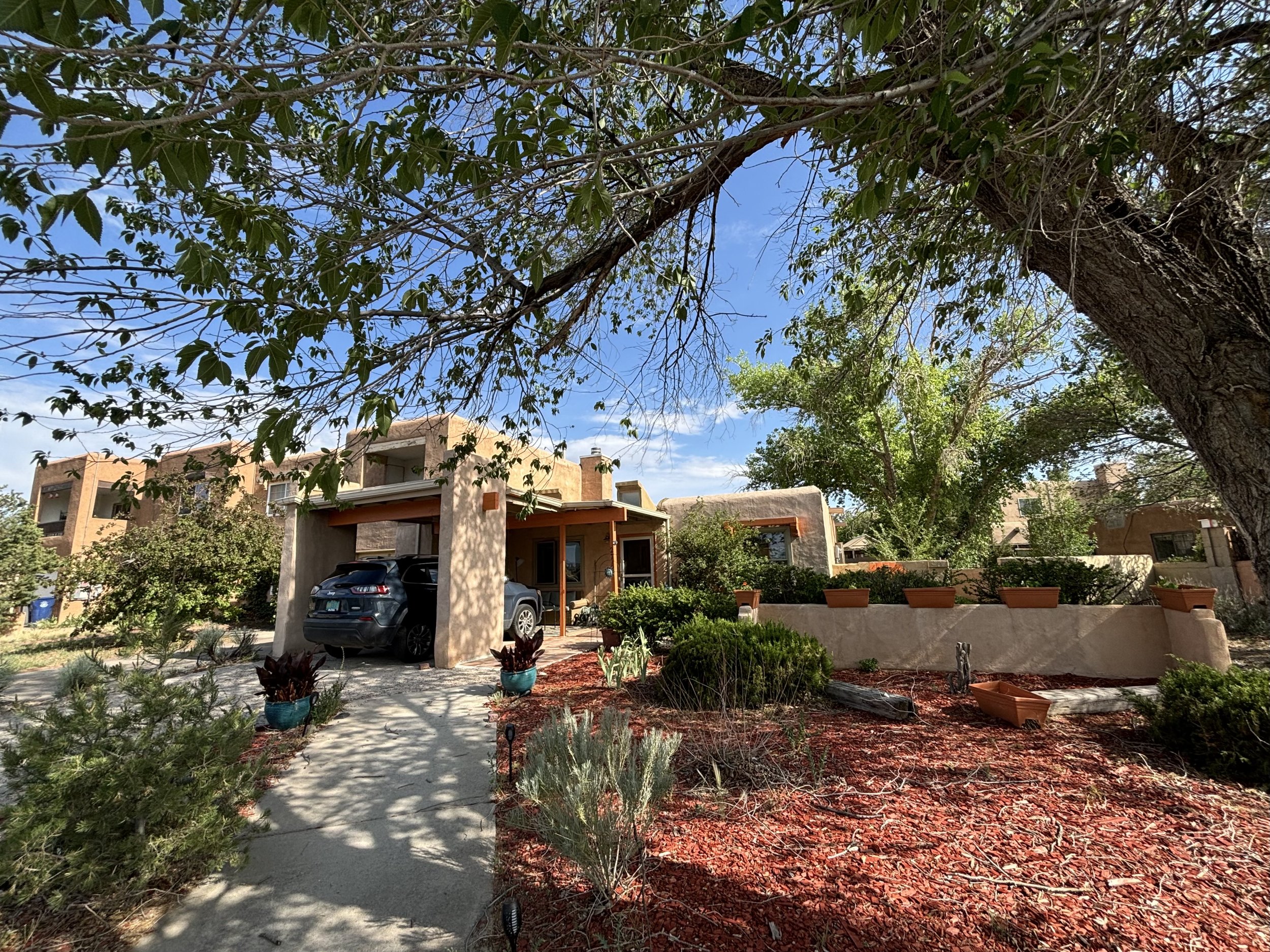Driving west through the Four Corners region on Route 64, I scanned south and noticed something otherworldly. It interrupted the horizon line, piercing upward like a cluster of spires. While not architected, it is a Ship Rock, having spiritual significance to the Navajo tribes of the land.
The Ship Rock landform, located in northwestern New Mexico, is the remnant of an explosive volcanic eruption that occurred around 30 million years ago. The main part of the landform is 600 meters high, and 500 meters in diameter. Ship Rock, known as Tse Bitai, or "the winged rock" in Navajo, is a volcanic neck, or the central feeder pipe of larger volcanic landform which has since eroded away. The neck is composed of fractured volcanic rock, or breccia, crosscut by many thin veins of lava.
Here’s another photo a few miles closer. Things that are different have a way of drawing attention at a distance.

